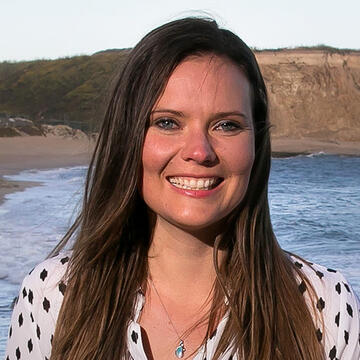
Nicole Thometz
Associate Professor
Biography
Dr. Nicole Thometz is a broadly trained physiological ecologist who specializes in marine mammal physiology, ecology, and behavior. A main focus of her research program pertains to the physiological requirements and capacities of ice-dependent Arctic seals. This research aims to better understand the sensitivity and/or resilience of ringed, bearded, and spotted seals to ongoing sea ice loss and environmental change in the Arctic. Another key area of her research focuses on energy requirements, diving capacities, reproductive energetics, thermal physiology, and foraging behavior of sea otters. In addition, Dr. Thometz has studied the physiology and behavior of Weddell seals in the Antarctic, the metabolic demands and diving capacities of Hawaiian monk seals, and the physiology of sound producing muscles in a variety of odontocete species.
Research Areas
- Diving physiology
- Foraging behavior
- Marine mammal biology
- Physiological ecology
Education
- UC Santa Cruz, PhD in Ecology & Evolutionary Biology, 2014
- University of Portland, BS in Biology, 2008
Selected Publications
- Lyon, S, Tomoleoni, J, Yee, J, Fujii, J, Thometz, NM (2024). “Foraging ecology of southern sea otters at the northern range extent informs regional population dynamics.” Endangered Species Research. 54: 383-394.
- Tengler, M, Dearolf, J, Bryan, A, Reichmuth, C, Thometz, NM (2024). “Comparative muscle physiology of ringed (Pusa hispida), bearded (Erignathus barbatus), and spotted (Phoca largha) seals from the Bering and Chukchi Seas.” Aquatic Mammals. 50(3), 181-198.
- Riordan, K, Dean, AE, Adema, P, Thometz, NM, Batac, F, Liwanag, HEM (2023) “Ontogenetic changes in southern sea otter (Enhydra lutris nereis) fur morphology.” Journal of Morphology.
- Thometz, NM, Rosen, DAS, Hermann-Sorensen, H, Meranda, M, Pardini, M, Reichmuth, C (2023) “Maintaining control: metabolism of molting Arctic seals in water and when hauled out.” Journal of Experimental Biology.
- Thometz, NM, Hermann-Sorensen, H, Russell, B., Rosen, DAS, Reichmuth, C (2021) “Molting strategies of Arctic seals drive annual patterns in metabolism.” Conservation Physiology.